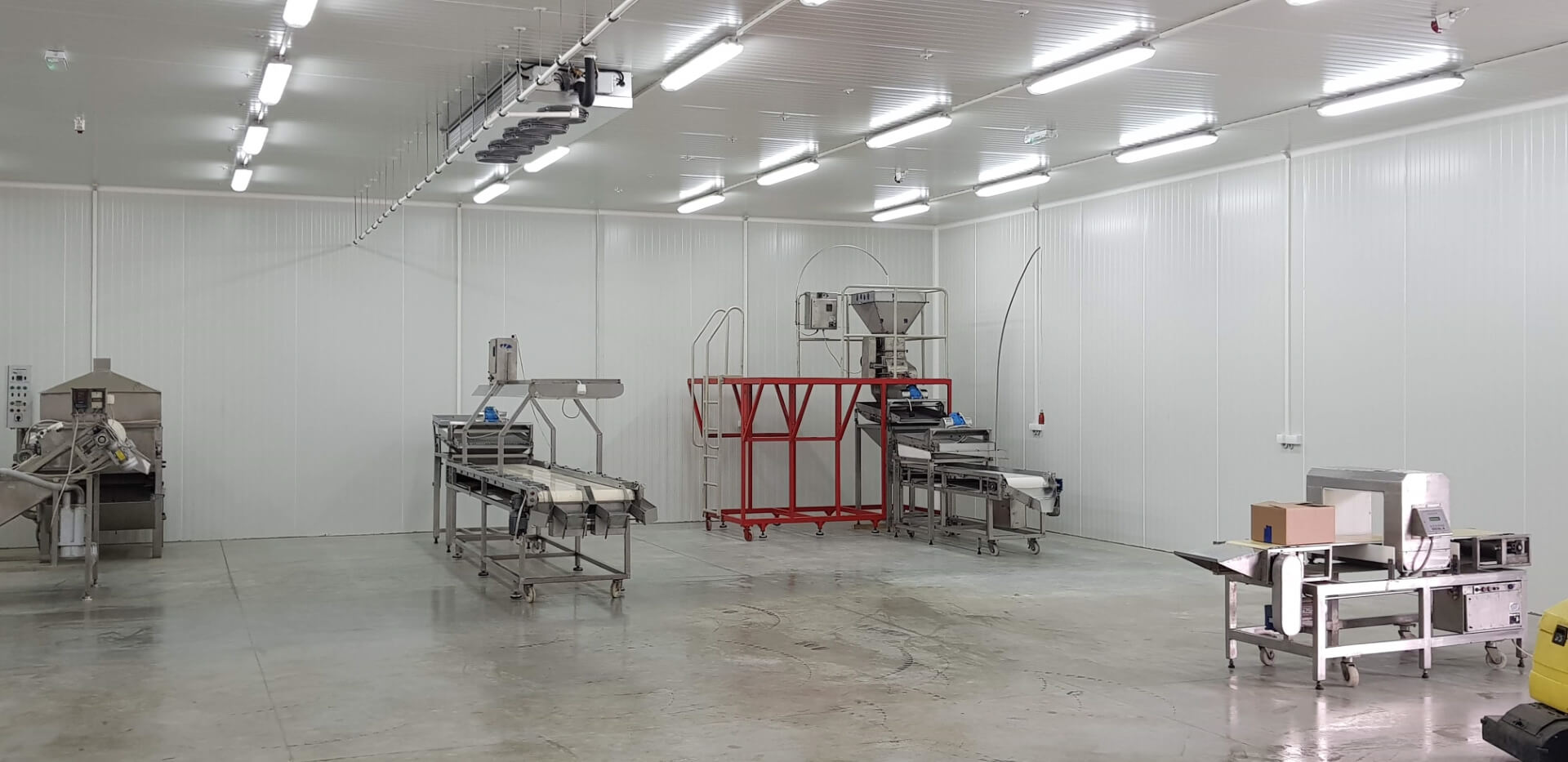Fruit Processing Technology

Fruit Processing Technology
Our production process of industrial processing is based on quality fruits that are harvested in clean crates, free from parasites, diseased fruits or otherwise damaged, without foreign matter - larvae, insects, soil, stone, leaves, etc., and under favorable weather conditions.
The products were manufactured in accordance with the domestic production method and HACCP, and controlled for the presence of metals.
Freezing fruit
The technological process of freezing fruit, it can be freely said that it starts on the plantation, because every next step from the moment of picking the fruit from the tree irreversibly affects the quality of the process and the economy of production.
The process itself can be divided into specific technological procedures:
- Reception of fruit
- Weighing, grading, marking
- Washing as needed (depending on fruit type)
- Refrigeration (to 1-2oC)
- Deep freeze (to -18oC) - shock tunnel
- Fruit stabilization - lager chamber
- Transfer from crates to work packages
- Fruit picking - removal of foreign bodies, impurities, plant material, soil, fractionation
- Packaging
- Labeling
- Storage
- Distribution
Fruit in our refrigerator freezes in classic tunnels with capacity of 40t/24h
Read moreCandying the fruit
Osmotic drying of the fruit, unlike conventional drying, involves the pre-treatment during which the fruit is held in a solution of sugar and water, glucose syrup or some other medium. After the end of the pretreatment period, classical air drying is started, after which the finished product is obtained.
The syrups in which the fruit is held during the pretreatment are about 70 brix. The fruit is prepared and cut, inserted inside, and thus standing for a certain time, depending on the type of fruit in question. During this process, water is extracted from the fruit by osmosis and the solutions are harder to equalize. When water is extracted from the fruit, part of the solution is inserted into the fruit and then followed by classical drying. During the whole production process, the temperature does not exceed 55-65oC, which is very important because it preserves the nutritional value of the fruit.
Osmotic drying of fruits is not an easy process, however, in addition to providing a product that does not lose vitamins and minerals, it is also suitable because of the production process itself. The solutions in which the fruit is kept can be processed and reused in a certain way.
During the use of the solution, when the fruit is held in and out of the water, the solution decomposes and its density drops to 50 brixes and is no longer in use. Then we have to throw out the water. We have vacuum vaporizers, where at 50-55oC the key solution ejects excess moisture and again returns to 70 briks, when it can be reused. Many fruits can be handled in this way, and so we process raspberries, apricots, quince, aronia, blackberries, oranges, plums, blueberries, cherries, strawberries and some other fruits.
Read moreIndustrial jam
Jams, jams and other fruit products are part of our daily diet, we have been consuming and knowing them since ancient times. For simplicity of nomenclature, this study uses the term "jam" for other products that have the characteristic of jam, such as jam, marmalade, fruit jelly, fruit cheese, etc. Almost all kinds of fruits can be used to make jams and jam. In addition to jam, we will also deal with other fruit products. Jams, by general definition, are fresh or canned fruit products, whether or not containing added sugar, without sugar or with honey, cooked to the desired density, preserved by cooking or preservative or by a combination of cooking and preservatives.
Plum jam is a jam product made from whole, halved or roughly ground and gutted or unpasted plum fruit meat. Lubricant, with a characteristic caramel taste and characteristic bluish-brown color.
Cooking plum jam is not an easy process. We have vacuum vaporizers, where at 50-55oC plum wrenches and shed off excess moisture, thus obtaining a product that does not lose vitamins and minerals.
Read more